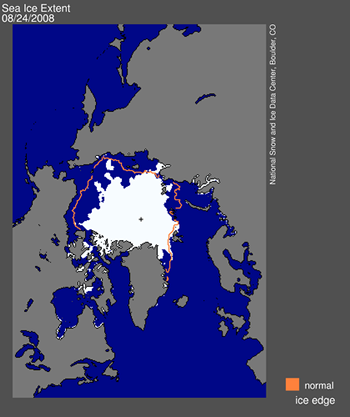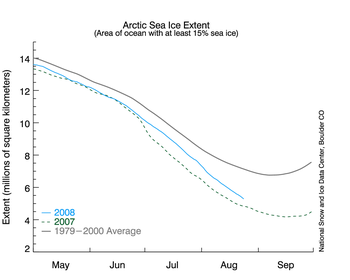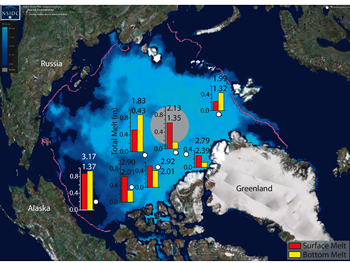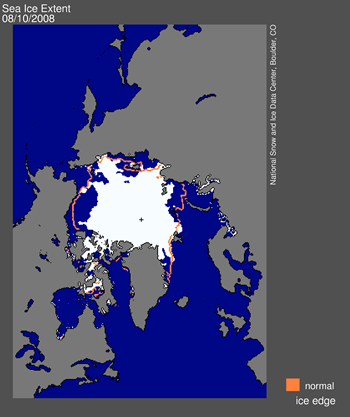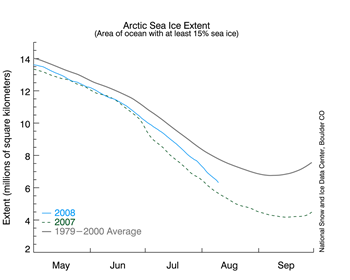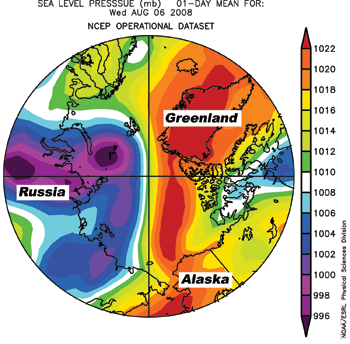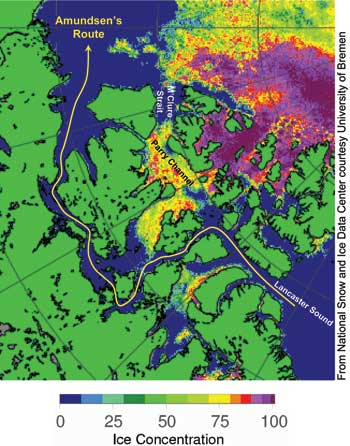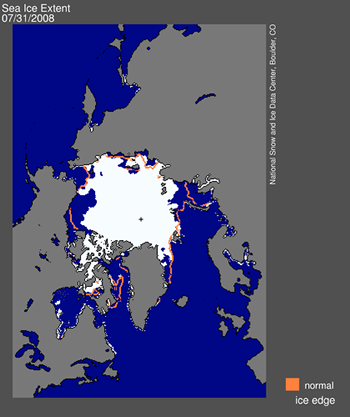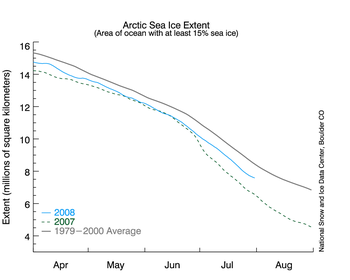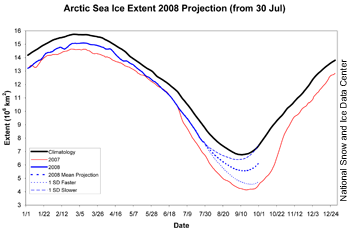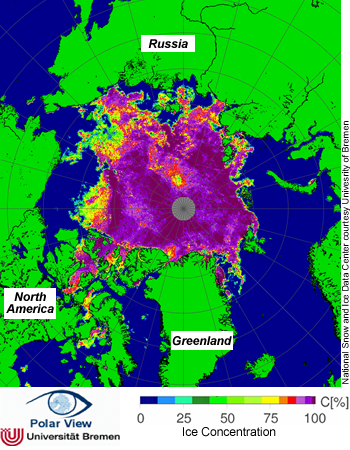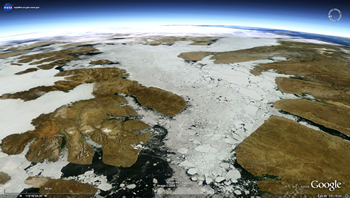Update 9:15 am MT August 27: See below.
Sea ice extent has fallen below the 2005 minimum, previously the second-lowest extent recorded since the dawn of the satellite era. Will 2008 also break the standing record low, set in 2007? We will know in the next several weeks, when the melt season comes to a close. The bottom line, however, is that the strong negative trend in summertime ice extent characterizing the past decade continues.
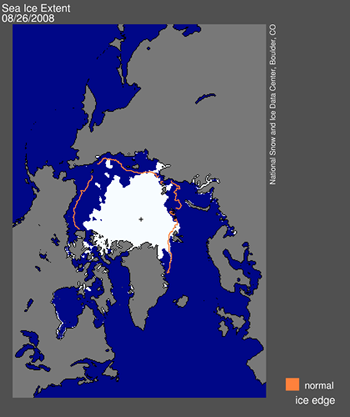
Figure 1. Daily Arctic sea ice extent for August 26, 2008, fell below the 2005 minimum, which was 5.32 million square kilometers (2.05 million square miles). The orange line shows the 1979 to 2000 average extent for that day. The black cross indicates the geographic North Pole. Sea Ice Index data. About the data.
—Credit: National Snow and Ice Data Center
High-resolution image
Overview of conditions
With several weeks left in the melt season, sea ice extent dipped below the 2005 minimum to stand as the second-lowest in the satellite record. The 2005 minimum, at 5.32 million square kilometers (2.05 million square miles), held the record-low minimum until last year.
Recent ice retreat primarily reflects melt in the Chukchi Sea off the Alaskan coast and the East Siberian Seas off the coast of eastern Russia.
Update 9:15 am MT August 27:
Arctic sea ice extent on August 26 was 5.26 million square kilometers (2.03 million square miles), a decline of 2.06million square kilometers (795,000 square miles) since the beginning of the month. Extent is now within 430,000 square kilometers (166,000 square miles) of last year’s value on the same date and is 1.97 million square kilometers (760,000 square miles) below the 1979 to 2000 average.
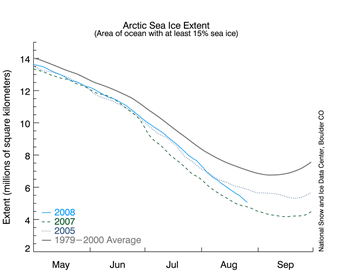 Figure 2. The graph above shows daily sea ice extent.The solid light blue line indicates 2008; the dark blue dotted line indicates 2005; the dashed green line shows extent for 2007; the gray line indicates average extent from 1979 to 2000. Sea Ice Index data.
Figure 2. The graph above shows daily sea ice extent.The solid light blue line indicates 2008; the dark blue dotted line indicates 2005; the dashed green line shows extent for 2007; the gray line indicates average extent from 1979 to 2000. Sea Ice Index data.—Credit: National Snow and Ice Data Center
High-resolution image
Conditions in context
Through the beginning of the melt season in May until early August, daily ice extent for 2008 closely tracked the values for 2005.
In early August of 2005, the decline began to slow; in August of 2008, the decline has remained steadily downward at a brisk pace. The 2005 minimum of 5.32 million square kilometers (2.05 million square miles) occurred on September 21.
For previous analysis, please see the drop-down menu under Archives in the right navigation at the top of this page.
